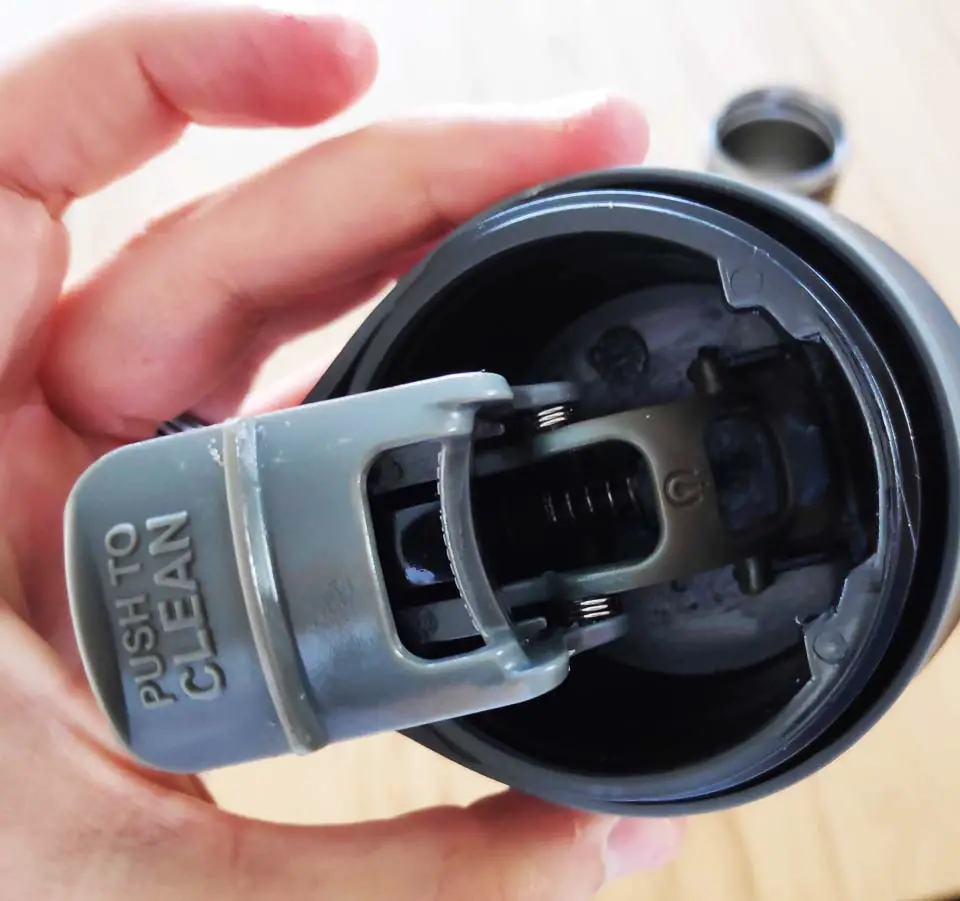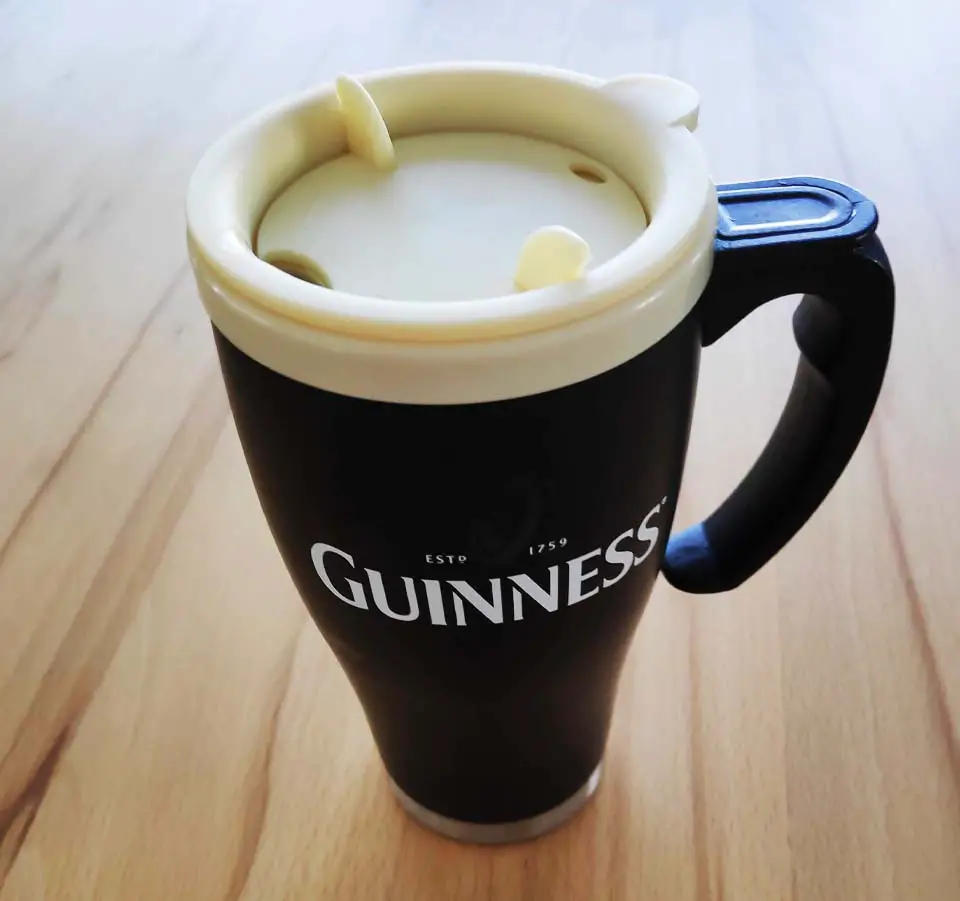It might be a strange subject to tackle on a dieting blog, but I’ve been using travel mugs for a while. Since I started fasting in 2017, I bought the first mug that I took to work every day.
At first, it was just filled with coffee and sometimes green tea. Along the way, I discovered bulletproof coffee and the sweet, sweet taste of coconut oil. And I got hung on it, my morning coffee doesn’t feel the same without those added ketones!
Since my thorough article on the subject of bulletproof coffee, I switched to the real thing, mixing MCT oil and ghee in a blender and pouring it into my travel mug. I am now officially addicted to this rich foamy texture and nutty flavor. But it’s even fatter!
But an oily coffee in a travel mug can be quite a problem as I discovered, if you buy cheap ones. So, come to think of it, there are some other things to consider when buying a mug.
Take it from somebody who already ruined 3 mugs in the past two years and who still uses them on a daily basis.
Tips on travel mugs
My tips might not be for everyone, since everybody has its preferred way of drinking coffee or tea and what they have to look for when buying a mug.
For me the most important things I found out when buying a travel mug is:
- That it’s seal closed and that the lid cannot get away unless you really try to open/remove it
- That it’s easy to wash
- That it robust enough to handle coconut oil in my everyday coffee
- That it doesn’t keep the taste of coffee/tea too much (there’s only so much you can do)
I personally don’t care much about:
- Keeping the content of my mug piping hot, quite the opposite
- The price, since I use it every day and intend to keep it for a few years
- The type of material it’s made of
What I would advise when buying mugs:
- To have one mug for every usage. If you alternate between tea and coffee, for example, I’ll advise you get two. The same thing with adding coconut oil to your beverage, try to separate it from the rest
- To think about how the mug will be used. Will it really be a travel mug or will it mostly be used at home? In that case, you can go for something much cheaper, I’ll talk about it
- To find one you can put in the dishwasher, at least the lid with the complicated stuff in it
Which mugs I actually use and recommend
I use two mugs in my everyday life. A travel mug that I’ll use when visiting clients for example (I’m a freelance web designer) and a “home mug” that I use to keep my beverage relatively hot, in a handy, not burning hands, simple and cheap mug.

My travel mug is the Contigo Autoseal West Loop. Here are the things I love about this mug:
- It’s stainless steel
- It’s sealed shut, you have to push a button when drinking to release the liquid and you can even lock the button to avoid spillage
- The lid can be disassembled for thorough washing if needed
- The lid can be put in the dishwasher
- Even though some fat (it’s hard to get off) can sometimes be found in the lid after washing it, it doesn’t clog and prevent the lid from working properly
Another great advantage is that it keeps coffee/tea warm for quite some time! It’s really well insulated. Since it’s my travel mug and I don’t drink my coffee too hot, I usually fill it in and start drinking around 30-45 minutes after. But if needed, it can stay hot for several hours.

I’ve read comments on saying that mold was forming inside the lid since it cannot be washed completely. I don’t really see how you cannot wash this properly, you can easily take out the mechanism to clean it, it’s even written on it PUSH TO CLEAN.

But as you can see from this picture, some fat can still be found inside the lid. So, you cannot simply put it in the dishwasher and think it’ll be perfectly fine. I use it 1-2 two times a week and I usually do a good cleaning every week to try and remove the fat.
What’s important as I already stated is that the whole mechanism is not hidden, you can actually access it and clean it. Which helps you prevent clogging inside of it.
As an example, take a look at this other mug. This one’s my girlfriends, it’s mostly fine for standard tea or coffee usage. But the whole mechanism is hidden inside the lid, when using fat in your coffee it clogs inside it. After 6 months of bulletproof coffee, I couldn’t close the lid anymore.
And after trying to disassemble it and clean it, it was definitely broken. Keep in mind that broking it is one thing, but the fat cannot be easily removed, so mold or other stuff could grow inside of it.

Behold, my home mug! Beautiful isn’t it? It’s a large Guinness Travel Mug and since it’s a branded one, it’s not that cheap (it’s actually more expensive than the Contigo one). And don’t be fooled: it’s no travel mug!
I bought it in Dublin in 2015, since I love Guinness and I thought it was really cool. When I started fasting, I thought I’d take it for a spin as my travel mug. After it once fell on the seat of my car, supposedly shut, and spilled half of its content in a few seconds, I can tell you: don’t use it as a travel mug, it’s useless.
But as a home mug it’s perfectly fine for me. The lid is quite simple, you just turn it to open and close. That doesn’t make it watertight of course, but it keeps warm long enough and it’s easy to clean when used with fat.
What type of mugs to avoid on bulletproof coffee
Many travel mugs will be perfectly fine with coffee or tea. It’ll keep the taste, even my stainless steel Contigo mug keeps a bit of the taste, but if it’s watertight and keep the beverage warm, you can buy it.
What I would really urge you to take a look at when buying a mug is to see if the lid can be cleaned easily and that the lid’s mechanism isn’t hidden, with parts hard to access.
Sadly, I don’t have any photos of my old broken mug, but I can really tell you that fat takes a toll at any type of lid. The simplest one, like the one for my Guinness mug, is easy to clean but crappy and the more complex ones can sometimes be… too complex.
After some research, I have to say I haven’t found comprehensive reviews and article on people drinking bulletproof coffee / tea in travel mugs and advising you on what to use.
So, here are my five cents! And don’t think more expensive always means higher quality.

